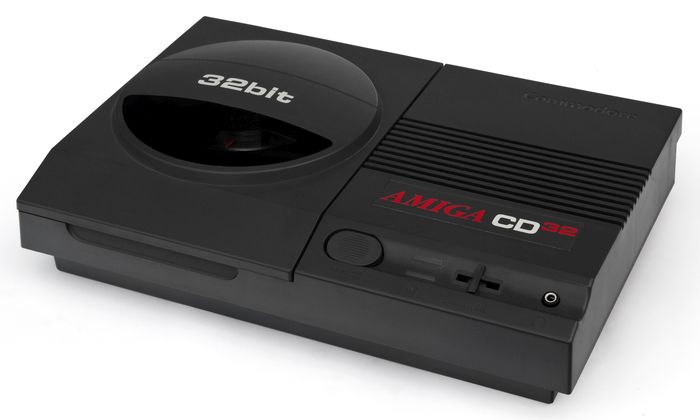
Micro Mart
 2nd December 2004
2nd December 2004
Categories: Review: Machine
Author: Sven Harvey
Published in Micro Mart #828
Sven Harvey concludes his argument that the Amiga CD32 hasn't been fairly appraised.
Amiga CD32: A Failure?
The Amiga CD32 was released in September 1993, and thanks to quite an array of software, albeit mostly A1200 shovelware on shiny 5" platters, the console was leading the fledgling CD-ROM market. The Phillips CDi and Sega's Mega CD floundered badly and the PC CD-ROM format had yet to gain any real market presence.
Things started to change as 1994 developed. The shovelware turned out to be a bit of a doubled edged sword as too late did software companies realise that they may actually need to innovate to sell their titles. Commodore International went belly up in April, after finally getting a few CD32 FMV modules and A400Ts out of the door. With the onslaught of the CD-ROM drive in the PC world and the arrival of Doom, plus the threat of the Saturn, PlayStation (an unknown quantity at the time with near-unbelievable specifications) and to a lesser extent, the 3DO, the CD32 didn't look too safe a bet.
In fact, not safe at all, so Game and Future Zone/EB (for they were rivals then) both lost their nerve with the format completely and dumped hardware as fast as they could, and reduced software orders (and most retailers followed suit). This in turn put pressure on the publishers, and titles such as Syndicate Wars, Biosphere, Magic Carpet, Inferno and TFX, all planned for CD32 release, disappeared and later top titles for the format became very hard to find, such as Super Stardust, the Alien Breed games and Speedball 2.
So has history been fair to the machine? Clearly not. For a while there it was a big success, generating cash for Commodore UK alongside the A1200 that meant that it and one other Commodore subsidiary were actually profitable, not that it would save them from the entangled disaster which was the fall of Commodore International. Commodore UK themselves had some great plans for the machine, including home computer expansions and getting the machine built into home hi-fi units, but even with the impressive VideoCD. playback that the released, but rarer than hen’s teeth, FMV module provided for the machine, it wasn't to be.
The CD32 does have a legacy though - Sony worked with Commodore on the machine - primarily on the CD interface. That expansion port idea on the back of the CD32 which allowed you to add a hard drive and interfaces was to go on to live on a future Sony product... The CD32 would live on in a way also as a basis for a kiosk system, and even ended up running the displays at the London Transport Museum.
The software base for the machine is hardly bereft of top quality and highly playable titles. Cannon Fodder made an appearance complete with a VideoCD intro that only CD32 owners with FMV cards would ever see. Yes there were turkeys - the fact that the likes of Rise Of The Robots and Microcosm were released for the platform alongside titles such as Seven Gates Of Jambala, and the extremely outdated/too early for the retro craze IK+ didn't help matters. However favourites such as the best versions of Pinball Fantasies, Pinball Illusions, the Alien Breed games and Super Stardust makes it an essential console to own for many.
Plus it's still, by far, the best way to play Speedball 2. Which alone, makes it a classic.



